Influenza H5N1 Fear-mongering Is Flooding the News. Perfect Candidate for “Disease X”? How to Protect Against H5N1
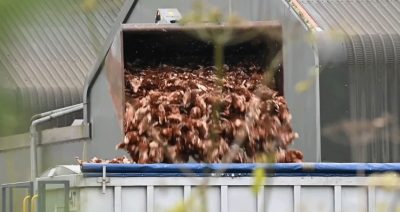
All Global Research articles can be read in 51 languages by activating the Translate Website button below the author’s name (only available in desktop version).
To receive Global Research’s Daily Newsletter (selected articles), click here.
Click the share button above to email/forward this article to your friends and colleagues. Follow us on Instagram and Twitter and subscribe to our Telegram Channel. Feel free to repost and share widely Global Research articles.
Global Research Referral Drive: Our Readers Are Our Lifeline
***
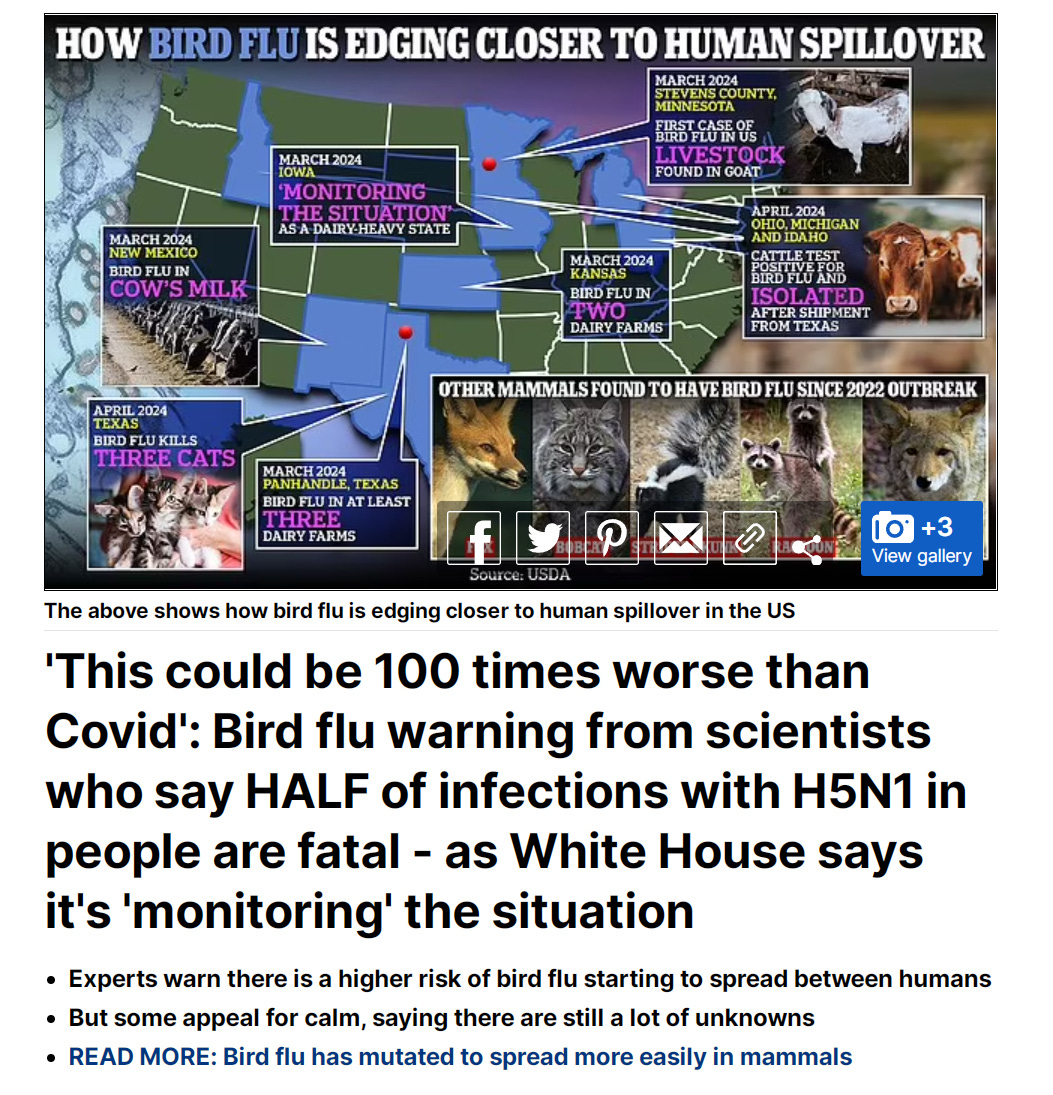
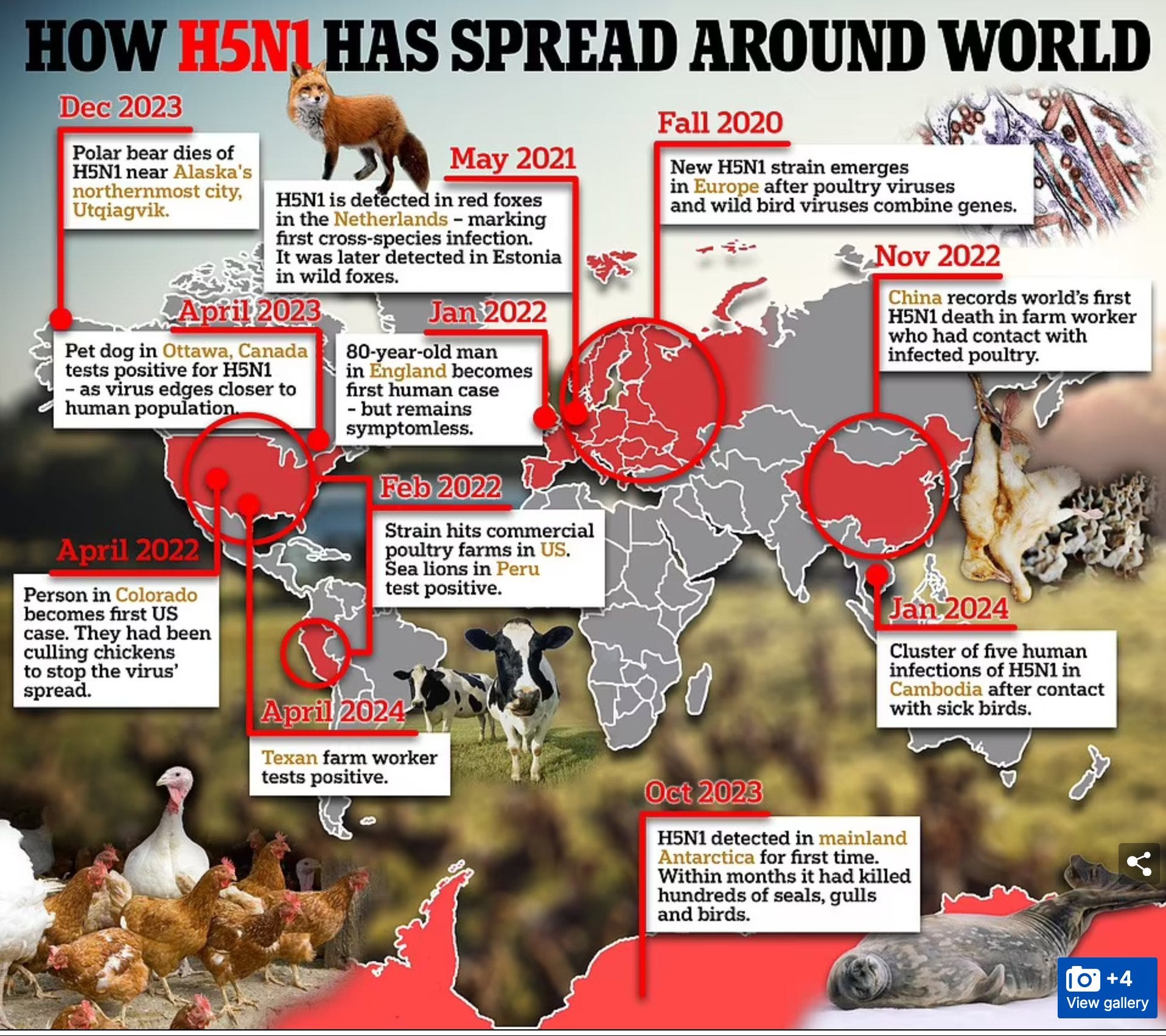
Headlines
-
Apr. 3, 2024: ‘This could be 100 times worse than Covid’: Bird flu warning from scientists who say HALF of infections with H5N1 in people are fatal – as White House says it’s ‘monitoring’ the situation
- Apr. 3, 2024: Dairly cows in Ohio tested positive for H5N1 bird flu, making it the 6th state to report cases
- Apr. 2, 2024: Cats in Texas have died of H5N1 bird flu, according to state officials. 3 cases have been confirmed. The cats were tested in connection with bird flu outbreaks at dairy farms.
- Apr. 2, 2024: Tests confirm avian flu on New Mexico dairy farm; probe finds cats positive
- Apr. 2, 2024: H5N1 bird flu found at Texas poultry plant owned by Cal-Maine Foods, the largest producer of fresh eggs in the U.S. 1.6 million laying hens and 337,000 pullets are being culled. USDA says safely handled and properly cooked eggs are safe to eat.
- Apr. 1, 2024 – Rare human case of highly contagious bird flu confirmed in Texas, “This person had exposure to dairy cattle in Texas presumed to be infected with HPAI A(H5N1) viruses, The CDC said this is the second case of a human testing positive for H5N1 in the United States, after a previous case was observed in Colorado in 2022.
- Apr. 1, 2024 – A person in the United States has tested positive for highly pathogenic avian influenza (HPAI) A(H5N1) virus (“H5N1 bird flu”), as reported by Texas and confirmed by CDC. This person had exposure to dairy cattle in Texas presumed to be infected with HPAI A(H5N1) viruses. The patient reported eye redness (consistent with conjunctivitis), as their only symptom, and is recovering. The patient was told to isolate and is being treated with an antiviral drug for flu. This infection does not change the H5N1 bird flu human health risk assessment for the U.S. general public, which CDC considers to be low.
- Mar. 27, 2024 – 21 year old student died of H5N1 bird flu in Vietnam
- Mar. 26, 2024 – H5N1 arrived on mainland Antarctica in February, and Adélie penguins have tested positive but without showing signs of disease
- Mar. 13, 2024 – Bird flu strain raises alarm as H5N1 virus kills South American wildlife
- Feb. 12, 2024 – CDC – Cambodia has reported four recent human infections with avian influenza (HPAI) A(H5N1) (bird flu) virus. These are the first human infections with HPAI A(H5N1) virus identified in Cambodia in 2024. The four infections occurred in three children, one of whom died, and an adult, all of which were identified in late January and early February. All patients reportedly had a history of recent exposure to sick or dead poultry prior to their illness.Currently, there is no indication of person-to-person spread associated with these four cases of H5N1 virus infection in Cambodia
- Jan. 29, 2024 – Cambodia reports 2 more human H5N1 avian flu infections
-
Jan. 4, 2024 – Avian flu detected in polar bear in Alaska that died
American Institutions
This is a technical summary of an analysis of the genomic sequences of viruses associated with an outbreak of highly pathogenic avian influenza (HPAI) A(H5N1) viruses in Texas. This analysis supports the conclusion that the overall risk to the general public associated with the ongoing HPAI A(H5N1) outbreak has not changed and remains low at this time. The genome of the virus identified from the patient in Texas is publicly posted in GISAID and has been submitted to GenBank.
April 2, 2024 – CDC has sequenced the influenza virus genome identified in a specimen collected from the patient in Texas who was confirmed to be infected with highly pathogenic avian influenza A(H5N1) [“HPAI A(H5N1)”] virus and compared these with HPAI A(H5N1) sequences from cattle, wild birds and poultry. The virus sequences are HA clade 2.3.4.4b HPAI A(H5N1) with each individual gene segment closely related to viruses detected in dairy cattle available from USDA testing in Texas.
While minor changes were identified in the virus sequence from the patient specimen compared to the viral sequences from cattle, both cattle and human sequences maintain primarily avian genetic characteristics and for the most part lack changes that would make them better adapted to infect mammals.
The genome for the human isolate had one change (PB2 E627K) that is known to be associated with viral adaptation to mammalian hosts, and which has been detected before in people and other mammals infected with HPAI A(H5N1) virus and other avian influenza subtypes (e.g., H7N9), but with no evidence of onward spread among people. Viruses can undergo changes in a host as they replicate after infection. Further, there are no markers known to be associated with influenza antiviral resistance found in the virus sequences from the patient’s specimen and the virus is very closely related to two existing HPAI A(H5N1) candidate vaccine viruses that are already available to manufacturers, and which could be used to make vaccine if needed. Overall, the genetic analysis of HPAI A(H5N1) viruses in Texas supports CDC’s conclusion that the human health risk currently remains low. More details are available in this technical summary below:
US Department of Agriculture:
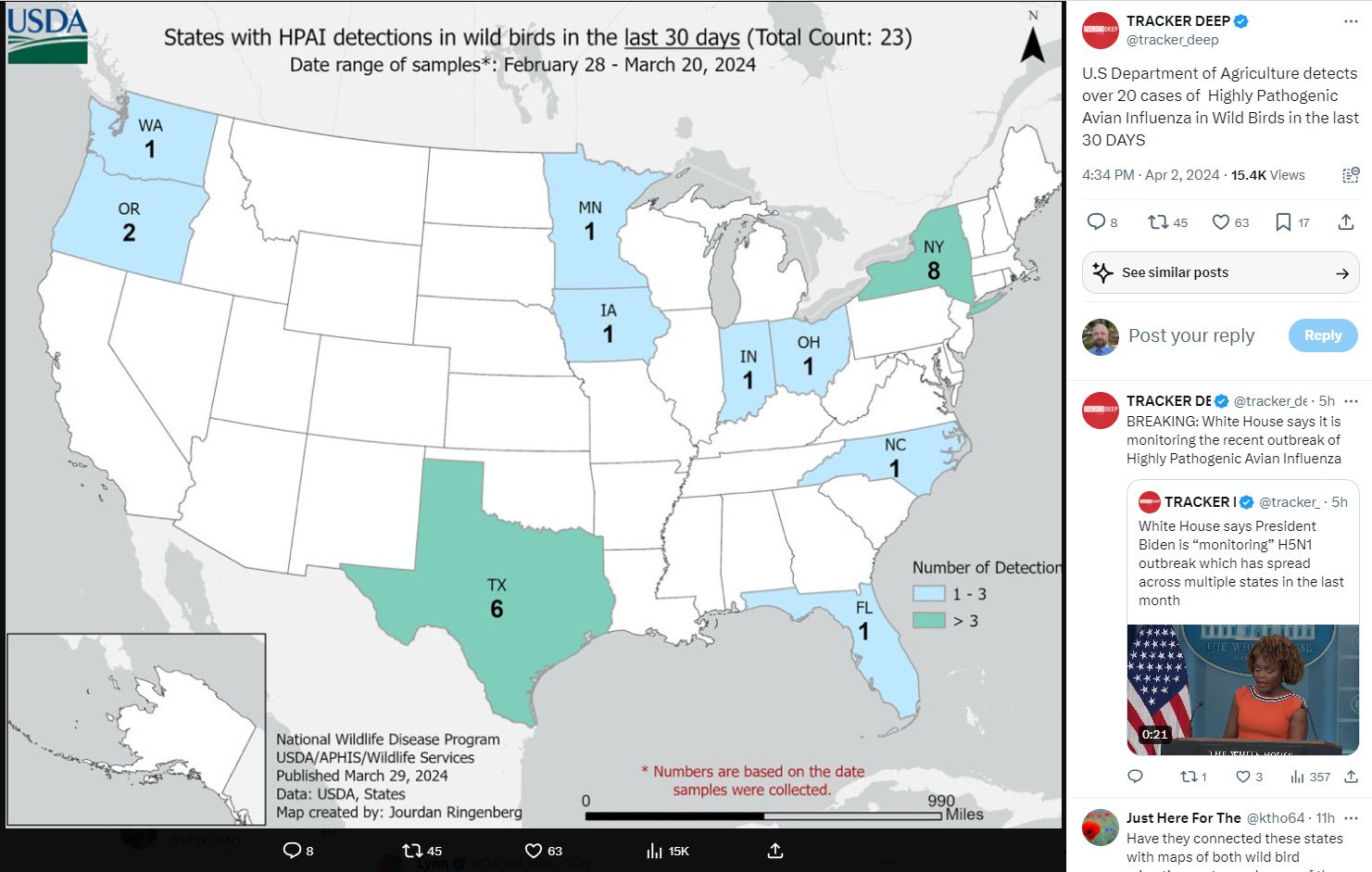
To summarize the propaganda first (as of April 3, 2024):
-
0 human to human transmission cases of H5N1
- 1 dairy cow to human case in Texas (HA clade 2.3.4.4b), exposed to dairy farm, had pinkeye, not hospitalized, is recovering (2nd human case in USA, first was in Colorado in 2022)
- Texas case has mutation PB2-E627K – adaptation to efficiently replicate in mammalian cells but not enough to spread human to human.
- Most recent human death: 21 year old Vietnamese student went wild bird trapping, got sick Mar. 11, died Mar. 23 from H5N1.
- 3 Texas cats tested positive for H5N1 and showed signs of sickness.
- 6 states where dairy cattle rested positive: Texas, Ohio, Kansas, Michigan, New Mexico, Idaho.
- Feb. 2024 – First penguins die in sub-Antarctic of H5N1
-
Jan. 2024 – Avian flu detected in polar bear in Alaska that died
-
There is a tremendous effort being put in at this time to “soft launch” a new pandemic and it seems like right now, Influenza H5N1 is an excellent candidate for “Disease X”
-
I’ve noticed a 3-pronged attack here in the past few weeks:
- H5N1 spreading to humans from other mammals
- an attack on dairy cattle (WEF doesn’t want us eating meat)
-
an attack on cats (WEF wants to kill all pets, including cats)
“From 1 January 2003 to 26 February 2024, a total of 254 cases of human infection with avian influenza A(H5N1) virus have been reported from four countries within the Western Pacific Region (Table 1).
Of these cases, 141 were fatal, resulting in a case fatality rate (CFR) of 56%. The last cases in the Western Pacific Region were reported from Viet Nam, with an onset date of 11 March 2024.”
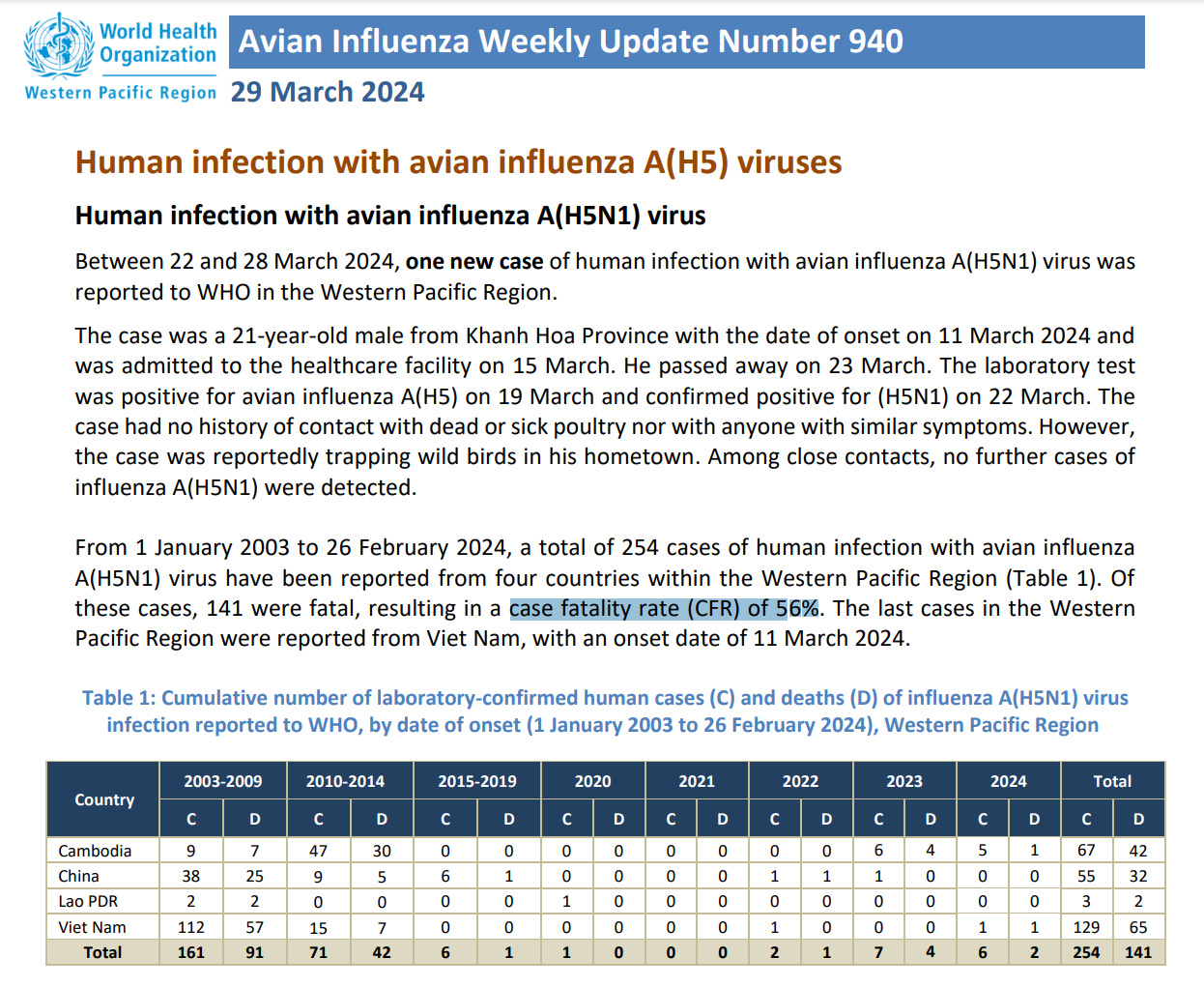
H5N1 Is the Perfect “Disease X”
-
It is allegedly spreading via mammals, especially those they want to eliminate in the long term
- High case fatality rate (56%) for the much needed “fear factor”
- Antivirals available
-
mRNA Vaccines already in the works
H5N1 Antiviral Drugs and Neuropsychiatric Side Effects
Viral neuraminidases are essential for influenza reproduction, facilitating viral budding and release of replicated virus from infected host cells.
Neuraminidase enzyme inhibitors act against influenza A and B.
Oseltamivir (Tamiflu), Peramivir (Rapivab) and Zanamivir (Relenza) are neuraminidase enzyme inhibitors.
“Despite demonstration of limited benefit, the drug is widely used, with a total of 48 million patients receiving prescriptions for oseltamivir worldwide since 2006. Approximately 10% of the drug penetrates the blood-brain barrier, which allows for potential neuropsychiatric side effects” (click here)
“The majority of these adverse events have been observed to have occurred in the pediatric population. Neuropsychiatric adverse events include delirium, disturbances in consciousness, perceptual changes, delusions, tremors, anxiety symptoms, seizure disorders, parasomnias, and apocrine and eccrine gland disorders”
“Researchers have found increased propensity for mice to jump from 20-cm high platforms when given oseltamivir.”
“Japan contraindicated its use among individuals aged 10 to 19 due to concerns of abnormal behaviors”
“Children receiving oseltamivir should be monitored for neuropsychiatric side effects”
From a paper titled: “The Tamiflu fiasco and lessons learnt” (click here):
“Serious Adverse Events, especially neuropsychiatric events associated with Tamiflu started getting reported…recent articles have questioned the risk-benefit ratio of the drug…recommendations for stockpiling the drug as given by WHO have been put to scrutiny…many reviewers have labeled Tamiflu saga as a “costly mistake.”
LONDON, March 20 (Reuters) – Some of the world’s leading makers of flu vaccines say they could make hundreds of millions of bird flu shots for humans within months if a new strain of avian influenza ever jumps across the species divide.
One current outbreak of avian flu known as H5N1 clade 2.3.4.4b has killed record numbers of birds and infected mammals. Human cases, however, remain very rare, and global health officials have said the risk of transmission between humans is still low.
Executives at three vaccine manufacturers – GSK Plc (GSK.L), Moderna Inc (MRNA.O), and CSL Seqirus, owned by CSL Ltd (CSL.AX) – told Reuters they are already developing or about to test sample human vaccines that better match the circulating subtype, as a precautionary measure against a future pandemic.
Others, like Sanofi (SASY.PA), said they “stand ready” to begin production if needed, with existing H5N1 vaccine strains in stock.
In a pandemic, vaccine manufacturers would shift production of seasonal flu vaccines and instead make shots tailored to the new outbreak when needed. They already have the capacity to make hundreds of millions of doses.
Many of the potential pandemic shots are pre-approved by regulators, based on data from human trials showing the vaccines are safe and prompt an immune response, a process already used with seasonal flu vaccines. This means they might not require further human trials, even if they have to be tweaked to better match whichever strain does jump to humans. Data on how well the vaccines actually protect against infection would be gathered in real-time.
In all, the WHO said there are close to 20 licensed vaccines against the broader H5 strain of flu. Existing antiviral treatments for people already infected will also help mitigate the impact.
Moderna’s mRNA vaccine research actually began with pandemic flu, and was modified for COVID, said Raffael Nachbagauer, executive director of infectious diseases at Moderna.
The company plans to launch a small human trial of an mRNA pandemic flu vaccine tailored to the new avian influenza subtype in the first half of 2023, he said, adding Moderna could respond “very quickly” in an outbreak scenario. The results will be closely watched, as the data on Moderna’s seasonal flu candidate was mixed.
*
May 21, 2023 – The current U.S. stockpile of H5N1 flu shots likely won’t offer much protection in the event of a pandemic, vaccine researchers said.
Almost 59 million commercial birds have already been culled in the United States. It’s the broadest outbreak of this type of avian flu, known as H5N1, since it was first identified in China in 1996.
The U.S. recorded its only human case of H5N1 last April — the person was involved in culling poultry with presumed infections in Colorado.The United Kingdom reported two cases Tuesday, both poultry workers with asymptomatic infections detected via routine testing. Chile reported one infection in March and Ecuador one case in January.
Since arriving in the U.S. last January, avian flu has spread from birds to several other mammals: mountain lions, bobcats, bears, seals, red foxes, coyotes, raccoons, skunks and possums, as well as an otter and a bottlenose dolphin.
Moderna said that later this year, it expects to begin clinical testing of an mRNA vaccine specific to the strain now circulating in birds, called 2.3.4.4b. mRNA technology offers an advantage because it allows vaccines to be produced and updated quickly.
Hensley leads a research team that is testing another mRNA vaccine to target 2.3.4.4b. Data published in April, which hasn’t been peer reviewed, showed that it elicited an immune response in mice and ferrets
Meanwhile, two other pharmaceutical companies, CSL Seqirus and GSK, have partnered with the U.S. government to manufacture experimental vaccine doses that are also closer matches to the current strain
The National Institutes of Health announced this month that it has started testing a universal mRNA flu vaccine among 50 volunteers.
*
My Take…
I don’t believe there will be a real Influenza H5N1 outbreak but one can certainly be easily simulated and then propagandized by the media.
A sort of “soft launch” of Influenza H5N1 pandemic is already underway with the “dairy cow” story. It seems every day we have a new update and a new type of spread, whether it’s to 3 cats or dairy farms in 6 states, etc.
If this continues, I can certainly foresee a sudden “human to human” spread with some new mutation to explain how it jumped from moving from cattle to cattle, to cattle to human, to human to human transmission.
There is a large enough segment of the population that is braindead enough to demand immediate lockdowns, masking, that includes the 8x mRNA vaccinated doctors who are now more spike protein than human (those who don’t exercise and haven’t died from myocarditis induced sudden cardiac death yet).
In that case, everything would move very quickly in terms of mandatory lockdowns, masking and even limits on airtravel, before people start asking too many questions.
The key approach to a “Disease X” style Influenza H5N1 pandemic would be the following:
-
non compliance with lockdowns and masking
- do not take antivirals such as: Oseltamivir (Tamiflu), Peramivir (Rapivab) and Zanamivir (Relenza)
- do not take any Influenza H5N1 mRNA Vaccine under any circumstances.
-
If there is a limited release of a gain of function influenza (of any kind), in limited geographic locations such as airports, consider taking any of the following which have shown activity against H5N1:
- Quercetin + Zinc (click here)
- Olive Leaf Extract (click here)(click here)
- NAC (N-acetyl-L-cysteine) (click here)
- Elderberry (click here)
- Hydroxychloroquine (click here)
-
Nigella Sativa (Black Seed) (click here)(click here)
Most importantly, do not panic.
*
Note to readers: Please click the share button above. Follow us on Instagram and Twitter and subscribe to our Telegram Channel. Feel free to repost and share widely Global Research articles.
Dr. William Makis is a Canadian physician with expertise in Radiology, Oncology and Immunology. Governor General’s Medal, University of Toronto Scholar. Author of 100+ peer-reviewed medical publications.
Featured image: MILLIONS OF ANIMALS ARE SLAUGHTERED IN SILENCE. Here, a container with killed chickens from a large chicken farm in Alford, Lincolnshire can be seen. British authorities claim it is due to the largest bird flu outbreak ever in the UK. Across the Western world, millions of chickens are now being gassed to death beyond public awareness. Dairy and meat cattle have also begun to be killed by abandoned European farmers. Still: The Lincolnite / YouTube

